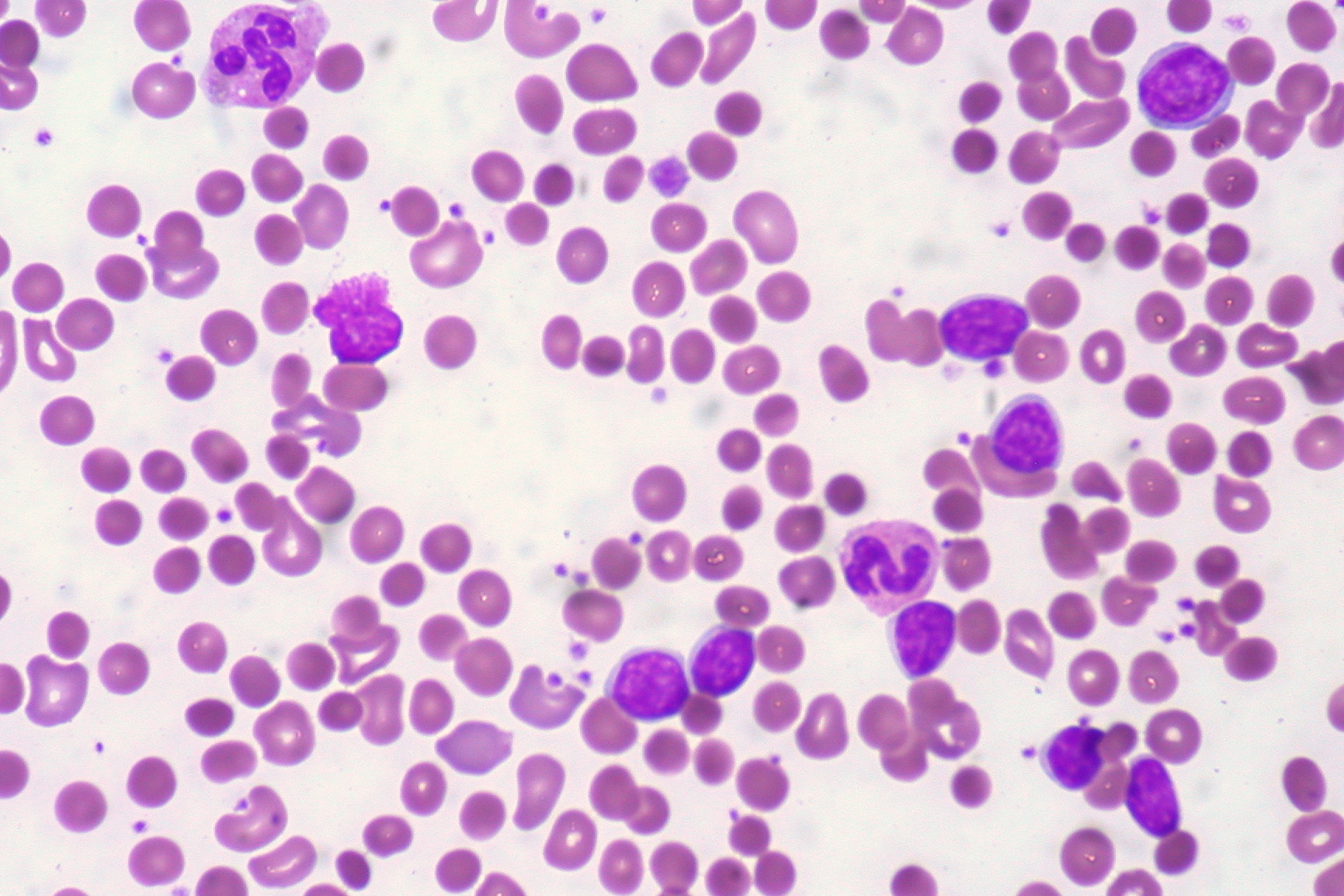Playlist
Show Playlist
Hide Playlist
Hemolytic Anemia: Overview
-
Slides HemolyticAnemia RedBloodCellPathology.pdf
-
Download Lecture Overview
00:01 Here, we’ll take a look at normocytic anemia and under normocytic, this time, it’s hemolytic anemia. 00:07 What does that mean to you? It means that the bone marrow is now compensating, the bone marrow is trying to now compensate for the increased destruction of that RBC. 00:16 So therefore, you call this increased reticulocytosis. 00:19 Clinically, we refer to this being reticulocyte production index. 00:23 The magic number then you’ll have to memorize is greater than 3%. 00:27 Now, that would be in two categories here. 00:30 And the reason that we have two categories with hemolytic anemia is because your RBC can be destroyed – Well, there’s a problem within the cell itself. 00:38 So we will first go through intrinsic defects, but ladies and gentlemen, this is not going to picture – Or the picture that you’re going to get here is not the clinical picture, it’s just the pathogenesis of the disease. 00:51 So what you’re paying attention to as you go through each one of these intrinsic and extrinsic differentials well, is the destruction of RBC taking place within the blood vessel, hence intravascular, or is it destruction of the RBC, hemolysis, taking place outside of the blood vessel primarily at the spleen and that would be extravascular, is that clear? So the way that this is divide into intrinsic and extrinsic doesn’t mean that it’s only intravascular or extravascular. 01:24 I will sound like a broken record over and over again until this point gets hammered home, so without further ado, let’s get into our issues here. 01:33 We’ll walk through membrane defects. 01:36 These membrane defects include hereditary spherocytosis, elliptocytosis, and PNH. 01:43 Next, under intrinsic, remember this would mean that the RBC itself, there’s a pathology inside the cell itself intrinsically. 01:52 But what I wish to point out to you is, for example, under membrane defect – Well, membrane defect is an intrinsic problem, but hereditary spherocytosis will be an extravascular hemolysis. 02:04 What does that mean to you? Well, when we do talk about HS, hereditary spherocytosis, we’ll talk about this patient being very, very jaundiced significantly. 02:13 And maybe perhaps a development of pigment stones or cholelithiasis, whereas something like paroxysmal nocturnal hemoglobinuria, PNH, will be an intravascular type of hemolysis. 02:26 Under abnormal hemoglobin, we’ll walk through sickle cell and HbC disease and deficiency of enzymes. 02:32 You may use the mnemonic MAD. 02:34 M- Membrane. 02:36 A- Abnormal hemoglobin. 02:38 D- Deficiency of enzymes. 02:40 At least it will give you an idea as to what’s going on with hemolytic anemias. 02:45 Under deficiency of enzymes, we will walk through G6PD deficiency and pyruvate kinase deficiency. 02:51 The other thing that I wish to point out to you is under abnormal hemoglobin, notice that we do not have thalassemias here, clear? Thalassemia, you know is a problem with hemoglobin, but what category does that come under? Microcytic anemia. 03:05 Do you remember that? Okay, dealing with your globin, but that’s why we don’t find thalassemias under normocytic. 03:12 On the side of extrinsic defect, what does that mean? Your RBCs are passing through and it gets hit by a valve that was stenotic and rigid. 03:19 That will be extrinsic defect. 03:21 Now if it is blood loss greater than 1 week, what does that mean? Well, greater than 1 week, this would start meaning that you have reticulocytosis, isn’t that what you’re paying attention to? So greater than 1 week, now the bone marrow is in fact working because the erythropoietin has kicked in and so therefore now you have production of your RBCs, we call this increased reticulocytosis. 03:44 Immune hemolytic anemias we’ll walk through. 03:46 Autoimmune hemolytic anemia, and the differences between micro and macroangiopathic. 03:51 And we’ll take a look at malaria quickly. 03:52 So here’s a broad category and algorithm, which is showing you all the major hemolytic anemias.
About the Lecture
The lecture Hemolytic Anemia: Overview by Carlo Raj, MD is from the course Hemolytic Anemia – Red Blood Cell Pathology (RBC).
Included Quiz Questions
Which of the following is an anemia due to an intrinsic defect in the red blood cell membrane and extravascular hemolysis?
- Hereditary spherocytosis
- Paroxysmal nocturnal hemoglobinuria
- Immune hemolytic anemia
- Glucose-6-phosphate dehydrogenase deficiency
- Hemoglobin C disease
Which of the following most likely causes microcytic anemia?
- Beta thalassemia
- Hemoglobin C disease
- Pyruvate kinase deficiency
- Microangiopathic hemolytic anemia
- Sickle cell disease
Customer reviews
5,0 of 5 stars
| 5 Stars |
|
1 |
| 4 Stars |
|
0 |
| 3 Stars |
|
0 |
| 2 Stars |
|
0 |
| 1 Star |
|
0 |
it's clear and on point. Good job by Carlo Raj, MD




